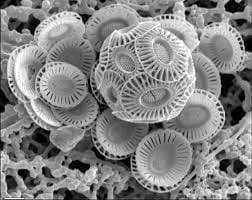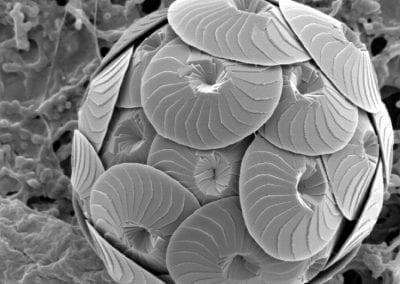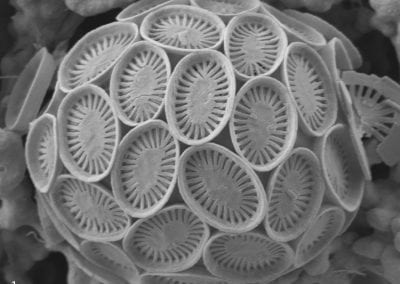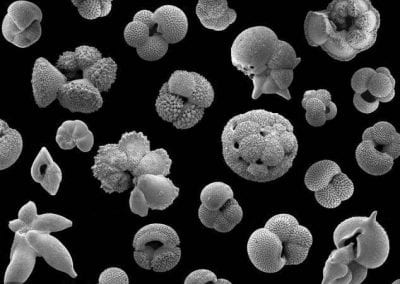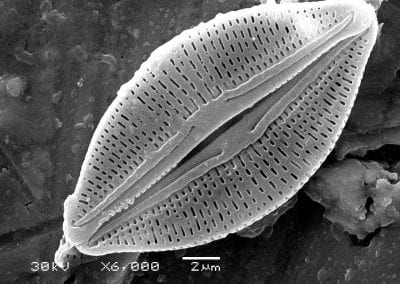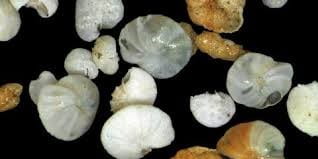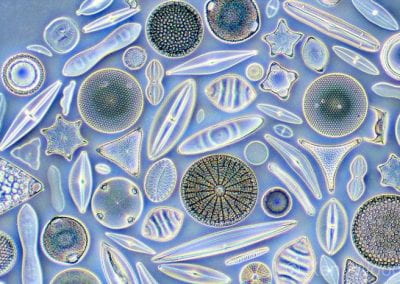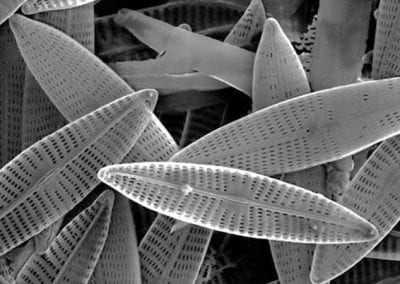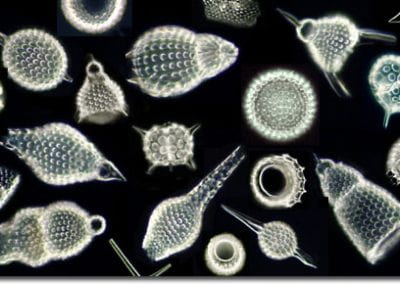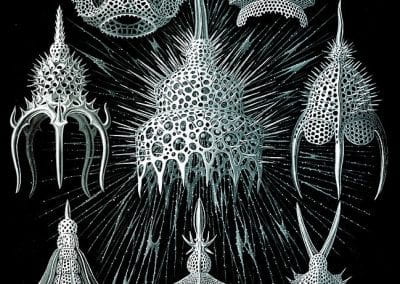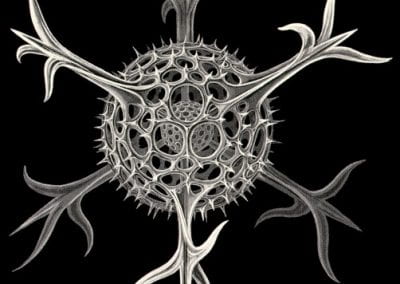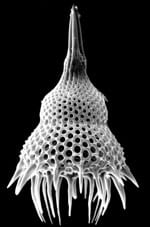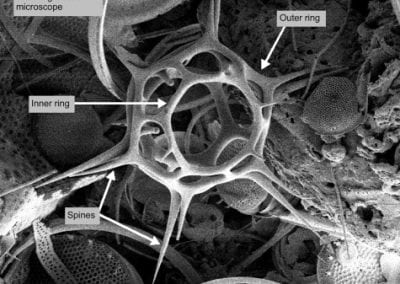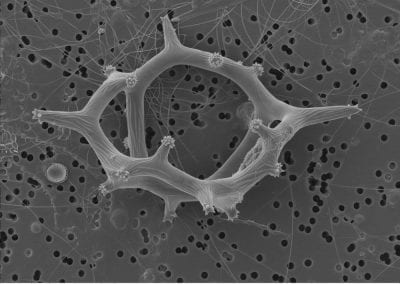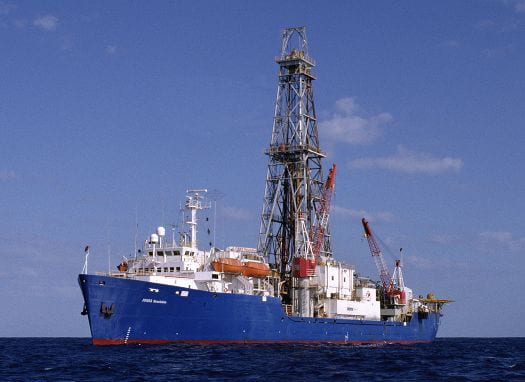
Ocean Drilling Program (ODP) Microfossil Research
The Ocean Drilling Program (ODP) was an international cooperative effort to explore and study the composition and structure of the Earth’s ocean basins. ODP, which began in 1985, was the direct successor to the highly successful Deep Sea Drilling Project initiated in 1968 by the United States.
The program used the drillship JOIDES Resolution (JOIDES=Joint Oceanographic Institutions for Deep Earth Sampling) on 110 expeditions (Legs) to collect about 2000 deep sea cores from major geological features located in the ocean basins of the world. The program eventually became the International Ocean Discovery Program. The research enabled by IODP samples and data improves scientific understanding of changing climate and ocean conditions, the origins of ancient life, risks posed by geohazards, and the structure and processes of Earth’s tectonic plates and uppermost mantle.
IODP began in 2013 and builds on the research of four previous scientific ocean drilling programs: Project Mohole, Deep Sea Drilling Project, Ocean Drilling Program, and Integrated Ocean Drilling Program. Together, these programs represent the longest running and most successful international Earth science collaboration.
The following research projects have been carried out by paleontologists from Broward College in collaboration with Florida Atlantic University and Florida State University.
ODP Leg 127 Japan Sea
Lynn Curtis, Shore-based Paleontologist
(Florida Atlantic University, Broward College)
ODP Leg 128 Japan Sea
Dr. Jay Muza, Shipboard Paleontologist
(Florida State University, Broward College)
ODP Leg 170 Costa Rica Subduction Margin
Dr. Jay Muza, Shipboard Paleontologist
(Florida State University, Broward College)
ODP Leg 205 Costa Rica Subduction Margin
Dr. Jay Muza, Shore-based Paleontologist
(Florida State University, Broward College)
Jason Chipps, Shore-based Paleontologist
(Florida State University, Broward College)
Microfossils
Microfossils are microscopic single-celled organisms that belong to the Kingdom Protista. They include calcareous nannofossils (coccoliths) and foraminifera, and siliceous diatoms, radiolarians, and silicoflagellates; planktonic organisms that inhabit the sunlit surface of the waters of the world ocean.
Microfossils are a common feature of the geological record, from the Precambrian to the Holocene. They are most common in deposits of marine environments, but also occur in brackish water, fresh water and terrestrial sedimentary deposits.
The tiny shells of microfossils are the sediments that cover vast areas of the seafloor. In some areas of the seafloor, they are mixed with mud or sand. During the drilling process on the ship, when a core is brought up on deck, scientists make and view slides to identify the microfossils found in cores to determine the age of the sediment, as well as something about Earth’s past climate, paleoclimatology.
Studies of past changes in the environment and biodiversity often reflect on the current situation, specifically the impact of climate on mass extinctions and biotic recovery.



